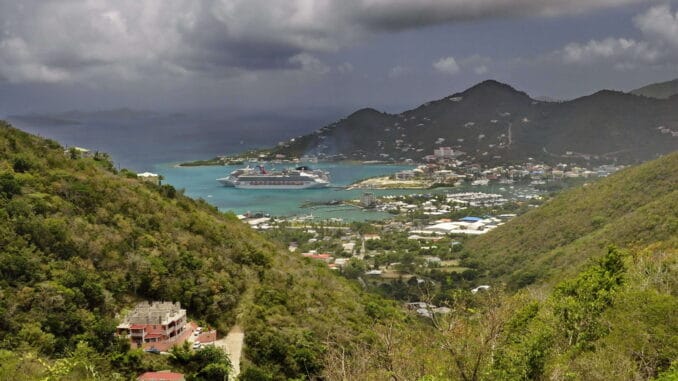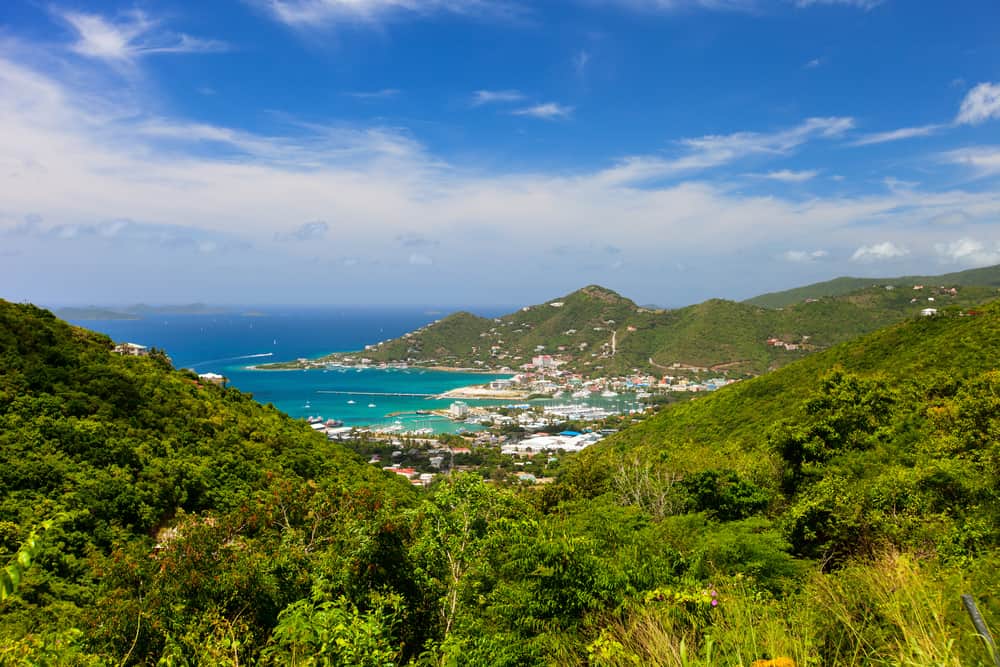
Introduction
If you are thinking of traveling to the British Virgin Islands, one of the most important things you might want to learn about is its capital. Do you know what the capital city is, and where it is located?
The capital of the British Virgin Islands is called Road Town, and it’s found in Tortola. It has a population of around 15000, and it is located alongside the sea. Its name comes from a nautical term that means a place for ships to dock that is not as sheltered as a harbor: “the roads.” It enjoys a lot of tourism.
In this article, we’ll find out more about Road Town, how it was chosen as the capital, and what it’s like to live there or visit it.
Where Is The Capital Of The British Virgin Islands Located?

The capital of the British Virgin Islands is located in the center of the country on the south coast. It has a somewhat tropical climate, and is consistently warm throughout most of the year, with very little temperature fluctuation.
The island is vulnerable to hurricanes, however, and was devastated by Hurricane Irma in 2017. The capital enjoys a lot of trade and is connected by road to the only major airport on the island, Terrance B Lettsome International Airport (located at Beef Island).
Interestingly, there is some dispute over the boundaries of Road Town. Some people say that Road Town starts at the Port Purcell roundabout if you approach from the east, while others argue that Baughers’ Bay is part of the town too.
Similarly, if you approach from the west, you’ll see a sign on Slaney Hill that welcomes visitors. However, others say that Road Town starts at Fort Burt and Road Reef, and anything outside of this is beyond the town’s boundaries. Prospect Reef Hotel is not part of Road Town, according to these individuals.
The town’s protection from the Crown ran as far as Fort George and Fort Burt, causing further confusion about the boundaries. This matter is unlikely to be resolved in a hurry.
Brief History Of Road Town

Not much is known about the early inhabitants of the British Virgin Islands, although pottery has been found and there are many archaeological sites across the island. Europeans arrived in 1493, when Columbus spotted the islands while traveling to America on behalf of Spain, but Spain didn’t settle there.
Many of the native people were taken as slaves, particularly by the Spanish. Pirates used Tortola a lot, including coves near the existing Road Town, but the islands weren’t colonized by Europeans until 1621. The Dutch began to settle the land, but the English quickly took over and began using the base to deal with pirates.
There was a lot of conflict, and in 1640, Spain began attacks on Tortola. In 1647, they wiped out all the inhabitants of Road Town, and destroyed the settlement. It was likely rebuilt at some time in the following years, possibly after 1672, when Britain took control of the Islands.
Tortola became home to many sugar plantations. Road Town may have been established to help create a sugar trade route in the Caribbean. As an important part of the trade route, the town and the Islands as a whole were frequently visited.
When slavery was abolished, Road Town experienced a massive dip in its wealth and economy.
When Did Road Town Become The Capital Of The British Virgin Islands?

It’s not very clear when Road Town became the capital of the British Virgin Islands. A lot of land passed hands repeatedly in the early history of the Islands, and there is no official date associated with this capital city.
Why Is Road Town The Capital Of The British Virgin Islands?
It’s likely that Road Town is the capital of the British Virgin Islands because this is where money would have come in. Ships docking on the island, carrying goods, would have landed in Road Town because it offered safety and security.
This brought wealth to the town, and helps to explain why it is the capital. Even when the trade routes ended with the abolition of slavery around 1834, Road Town remained a point for landing ships. It did see a slump and massive decline in its local economy, but in the 1980s, the Islands became popular with tourists.
The influx of tourists massively increased the prestige and wealth of the town, and the population swelled, supported by the tourism industry. It makes sense that Road Town has remained the capital because of its excellent access to the ocean.
Best Places To Visit In Road Town
So, if you are visiting Road Town, what are the must-see spots?
One of the top options is the Historical and Beach Tour, which is a 4-hour bus tour that takes in a lot of Tortola and travels up the Great Mountain Road to an impressive mural on Fahie Hill. This is a beautiful way to get a taste of the island.
If you love art museums, check out the BVI Folk Museum, which is a small museum packed with curious items and history. A lot of the relics date from the time of slavery, which is ideal for history buffs.
You could also visit the J.R. O’Neal Botanic Gardens, which cover 4.5 acres and are home to amazing indigenous flowers and some incredible, exotic birds.
Another option is the Sail Caribbean Divers, which allow you to explore the incredible coastal waters around the Islands. You will see fish and other sea life, and this is the perfect activity for individuals who love wildlife.
There’s also the Tortola Pier Park, which is located on the waterfront and offers a wide variety of stores with all sorts to buy. You’ll get a wonderful taste of the town at this open-air mall.
Conclusion
The capital of the British Virgin Islands is Road Town, which sits on the coast and offers a safe docking space for ships. The town has stood for decades, although little is known about its early history.
